Elbow Dislocation
Introduction
Elbow dislocations are among the most prevalent kinds of dislocations. Common elbow injuries fit into one of two categories: simple or complex, depending on how much surrounding structure has been impaired. The most common causes are sports injuries and falls.
Simple radiographs can be used to provide a diagnosis. CT scans can be used to schedule surgical procedures or assess for loose bodies. Treatment for stable simple elbow dislocations is immobilization briefly followed by closed reduction. Complex elbow dislocations linked to fractures or ongoing instability should be treated surgically.
What is Elbow Dislocation?
- Any one of the three elbow joint bones may be struck or dragged out of its placement, resulting in an elbow dislocation. An elbow dislocation can result in severe pain and limit one’s ability to move the elbow.
- A joint is recognized as a region in your body where two bones connect. They are a component of your skeleton. Your body is comprised of hundreds of joints. They support your entire body.
- The elbow joint is the point on your arm where three bones meet: The bone in your upper arm, the humerus. Your forearm’s longer bone is known as the ulna, while the shorter bone is known as the radius.
- Additionally, a dislocated elbow may cause strain or tears in the muscles, tendons, blood vessels, and nerves that surround the joint.
Anatomy
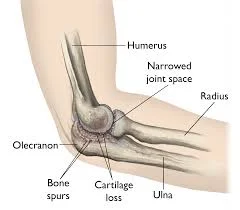
The elbow joint is formed by the union of three bones.
- The bone in the upper arm can be identified as the humerus.
- The lower half of the elbow is made up of the radius and ulna, two forearm bones.
These bones are all rather different in shape. Ligaments connected to the bones keep the elbow joint and bones in the proper position. The elbow and forearm bones are exhibited on the left side, with their palms pointing forward. The elbow and forearm bones are visible on the left side, with their palms pointing forward. The elbow ligaments on the right.
Function
- The elbow joint functions as a ball and socket as well as a hinge. Two distinct movements take place at the elbow when muscles tense and release.
- Elbow bending and straightening are made possible by a hinge joint. Flexion and extension are the terms used to describe these, respectively.
- A ball and socket joint allows anyone to move their forearm up and down. We call these actions supination and pronation, accordingly.
- Both of these movements can be impacted by injuries and dislocations of the elbow.
- The elbow’s ligaments are located on the joint’s outer (right) and inner (left) sides.
Types of Elbow Dislocation?
The degree of joint bone displacement determines how medical practitioners classify dislocations.
- Total displacements, also known as luxation: When the bones in your joint become separated and forced out of alignment, it results in a full dislocation.
- In the language of medicine, a partial dislocation is described as a “subluxation.” You have a subluxation if anything pulls on your joint and the bones still touch, just not as much as they usually do.
In addition, physicians categorize elbow dislocations according to the degree of harm done to the surrounding tissue and joint:
- Simple elbow dislocation: damage to the elbow’s supporting ligaments but not the joint’s skeletal structure.
- Complex elbow dislocation: fractures and serious damage to your tendons and ligaments.
- Severe dislocation of the elbow: Injury to the surrounding blood vessels and nerves.
What is the frequency of Elbow Dislocation?
One of the joints that gets dislocated at the highest rate in a year is the elbow. The only joints that get dislocated more frequently are the shoulders and fingers.
What are the causes of Elbow Dislocation?
- A dislocation can be caused by any force powerful enough to drive your elbow joint out of alignment.
- The most frequent causes include falls, particularly when you catch yourself or are bracing yourself for an impact by extending your arms in front of you.
- Car accidents.
- Sports-related injuries.
- Lifting or grabbing a youngster by the arm can cause their elbow to dislocate. This minor displacing is likewise known by the name “nursemaid elbow.”
What symptoms indicate an Elbow Dislocation?
The most typical signs of a dislocated elbow are:
- Bruising.
- Elbow Pain.
- Swelling.
- Your elbow appears visibly altered or out of position.
- The inability to move or use your elbow.
- A feeling of instability or that your elbow is weaker than normal.
What are the risk factors of the Elbow Dislocation?
An elbow can be dislocated by anyone, however, some persons are more likely to do so, including:
- Athletes who participate in a contact sport.
- Individuals older than 65.
- Children under the age of 16.
- Individuals with weak joint ligaments, such as those with Ehlers-Danlos syndrome or joint hypermobility syndrome.
- People who abuse their elbows, particularly when performing repeated tasks such as work or throwing in sports.
How is an Elbow Dislocation diagnosed?
A medical practitioner will diagnose a dislocated elbow by conducting a physical examination. Your elbow and the remaining areas of your arm will be examined by medical professionals. Tell your doctor about any symptoms you’re having and what you were doing just before you damaged your elbow.
Physical Examination
- Your doctor will examine your arm and look for any signs of deformity, edema, or pain during the physical examination.
- Check the skin and circulation of the arm, observing the wrist pulses. The hand may feel chilly to the touch and appear white or purple if the artery is damaged at the time of dislocation. The hand’s inability to get warm blood is the source of this.
- Examine the hand’s nerve supply. If nerves were injured during the dislocation, a portion or all of the hand may become numb and immobile.
What tests will be performed to detect an Elbow Dislocation?
To discover damage inside your body after a dislocation, your medical professional may need to do the following imaging tests:
- X-ray: An X-ray is necessary to determine whether a bone injury has occurred. X-rays can also help evaluate the course of the displacement. The best method to verify that the elbow is dislocated is through X-rays.
- A computed tomography (CT) scan. When identifying bone detail on an X-ray proves to be challenging, the physician could prescribe a computed tomography (CT) scan.
- Magnetic resonance imaging, or MRI. A magnetic resonance imaging (MRI) scan may be useful if it is important to assess the ligaments, however, it is rarely necessary at the time of the dislocation.
- The doctor will fix (reduce) the elbow once the X-ray verifies the dislocation. Typically, a CT or MRI scan will be conducted after the elbow dislocation has been straightened if required.
How is Elbow Dislocation treated?
Conservative Treatment
The most crucial treatment for a dislocated elbow is to return your joint to its proper position. Your doctor may refer to this as a manipulation or a closed reduction. If you believe your elbow may have been dislocated, go to the emergency department right away.
Do not try to push your joint back into position by yourself. Do not allow anyone other than a skilled, professional healthcare expert to move or touch your damaged elbow. Try to keep your elbow as still as possible and avoid forcing yourself to use it.
Repositioning a dislocated elbow on oneself runs the risk of exacerbating the injury and damaging adjacent tissues. After your practitioner places your joint back in place, you may require additional treatments, such as:
- Immobilization: During the period of healing, patients can keep their elbows from moving by using a splint or sling.
- Medication: The medications you can take to lessen pain and inflammation will be discussed with you by your practitioner. See your provider before using over-the-counter pain medicines for longer than ten days in a row.
- Rest: You should stay away from engaging in any physical activity that strains or utilizes your elbow. Find out from your healthcare professional what you should not do while you’re healing.
- The elbow’s complete range of motion may be compromised if it is immobilized for an extended time. During this healing phase, physical or occupational therapy can help you regain your range of motion without running the danger of another dislocation.
- A strengthening program may be added by the physician or physical therapist once the elbow’s range of motion has improved.
- While the elbow heals, X-rays could be obtained regularly to make sure the elbow joint’s bones stay in their proper alignment.
Surgical Treatment
- The majority of people who dislocate their elbow don’t require surgery. Surgery might be necessary if: Other internal injuries were sustained as a result of the elbow dislocation.
- A closed reduction is either impractical or impossible. In this situation, surgery to fix your elbow joint has to be done.
- If you suffer from a complicated or severe dislocation. The elbow has several fractures in addition to the dislocation.
- After surgery, it will be necessary to protect the elbow. It could be secured with a hinge on the outside of the arm or in a splint. These devices guard against further elbow dislocation.
- Further surgery may be required to repair blood vessels and nerves in addition to bone and ligament injuries if a blood vessel or nerve injuries are linked to the elbow dislocation. Often, physical treatment is required to reduce stiffness.
How long does it take to heal after an elbow dislocation?
- A straightforward dislocation of the elbow often requires several weeks to heal. For a week or two, you will need to keep your elbow immobile for it to heal.
- You will require physical therapy for several weeks once your elbow heals sufficiently to allow for use.
- Elbow dislocations that are severe and complex require longer to recover. What to expect will be explained to you by your provider.
- Ask your physician how long you need for recuperation before returning to physical exercise. You run a higher risk of recurrence or dislocating your elbow if you resume exercising or playing sports before it has completely healed.
After healing, more surgery might be required to remove scar tissue, additional bone development, and mobility-impairing structures if the elbow remains stiff. Stiff elbows can be successfully moved again with this treatment, though usually not to their normal range. It was possible several months following the incident that occurred.
Over time, the following factors raise the chance of developing elbow joint arthritis:
- Poor bone alignment
- The elbow is not able to rotate or move normally.
- The elbow keeps moving out of the joint.
Physical Therapy for the Elbow Dislocation
Physical treatment is essential for elbow dislocation recovery, even though surgery can be required in certain situations.
You will require physical therapy for several weeks once your elbow heals sufficiently to allow for use. Your elbow could potentially have more range of motion with the assistance of your physical therapist.
During this healing phase, physical or occupational therapy can help you regain your range of motion without running the danger of another dislocation.
Common physical therapy methods for dislocated elbows:
- Modalities: Pain and inflammation-reducing treatments using heat, cold, and electrical stimulation.
- Manual therapy: Methods to lessen scar tissue and increase joint mobility, such as massage and mobilization.
- Range-of-motion exercises: Mild motions to avoid stiffness and regain flexibility.
- Exercises for strengthening: Specific movements to increase arm and forearm muscular strength.
- Functional exercises: Movements that are similar to daily activities and help the patient become ready to resume regular activities.
Even with physical therapy, some patients will never be able to fully extend their arms. Thankfully, the elbow still has a sufficient range of motion to perform its primary purposes.
Prognosis
The majority of displaced elbows heal fully. You should feel better right away once your joint is in its proper place. Your elbow may not extend as far as it did before getting dislocated, but this won’t stop you from using it.
What consequences might arise from an elbow dislocation?
Damage to the bones and tissues surrounding your elbow, such as the following, is the most frequent consequence of dislocations:
- Bone fractures.
- Sprains of tendons and ligaments.
- Nerve damage.
- Damaged blood vessels.
- Muscle strains.
Is it possible to prevent an Elbow Dislocation?
Elbow dislocations are not always preventable. Usually, an accident or trauma causes it to occur. You can reduce your risk, though, by taking certain steps.
- Wear the appropriate safety gear when participating in sports or other physical activity.
- If your elbow suffers during or after physical exercise, don’t “play through the pain.”
- After a strenuous activity, give your body time to rest and recuperate.
- Warm up and stretch before participating in sports or physical exercise.
- After a workout, stretch and cool down.
To minimize your probability of an accident, follow these general safety guidelines:
- Check your home or place of work to be sure nothing could injure you or anybody else.
- Always use the appropriate tools or equipment when reaching for anything at home. Be cautious of standing on work surfaces, tables, and chairs.
- Take a cane or walker if you are prone to falls or have trouble walking.
Summary
An elbow dislocation occurs when an external force moves the components of the elbow joint out of their normal alignment. Dislocations can be frightening injuries, particularly if they result in arm paralysis. Do not attempt rearranging your joint by yourselves. Additionally, don’t allow anyone who isn’t a qualified healthcare professional to try.
Even though a coach or loved one may have the best of intentions, trying to reset your joint might exacerbate the dislocation or lead to other problems. If you think you may have dislocated your elbow, get to the emergency department immediately.
FAQs
How much time does it take to recover from an elbow dislocation?
A straightforward dislocation of the elbow often requires several weeks to heal. For a week or two, you’ll need to keep your elbow immobile while it heals. You will require physical therapy for several weeks once your elbow heals sufficiently to allow for use.
Which elbow dislocation occurs most frequently?
Over 90% of injuries to the elbow result from posterior elbow dislocations. Due to the increased risk of poor function and potential neurovascular impairment with delays in reduction, early detection of this injury is necessary.
Is it possible to straighten a dislocated elbow?
It might never be possible for someone with this injury to fully extend their arm. Even if you are unable to fully extend or flex your arm, you can still carry out your daily activities with ease. You can regain motion by following your doctor’s recommendations and doing physical therapy.
What is a dislocated elbow?
The elbow bones, the humerus, ulna, and radius, can dislocate when they shift out of alignment at the elbow joint. This commonly happens when someone extends their hand to break a fall while maintaining a straight arm.
References :
- Elbow Dislocation – OrthoInfo – AAOS. (n.d.). https://orthoinfo.aaos.org/en/diseases–conditions/elbow-dislocation/
- Elbow Dislocation – Trauma – Orthobullets. (n.d.). https://www.orthobullets.com/trauma/1018/elbow-dislocation
- Dislocated Elbow. (2024, May 1). Cleveland Clinic. https://my.clevelandclinic.org/health/diseases/17942-dislocated-elbow
- Layson, J., & Best, B. J. (2023, July 4). Elbow Dislocation. StatPearls – NCBI Bookshelf. https://www.ncbi.nlm.nih.gov/books/NBK549817/
- Elbow Dislocation. (2023, April 12). WebMD. https://www.webmd.com/first-aid/elbow-dislocation

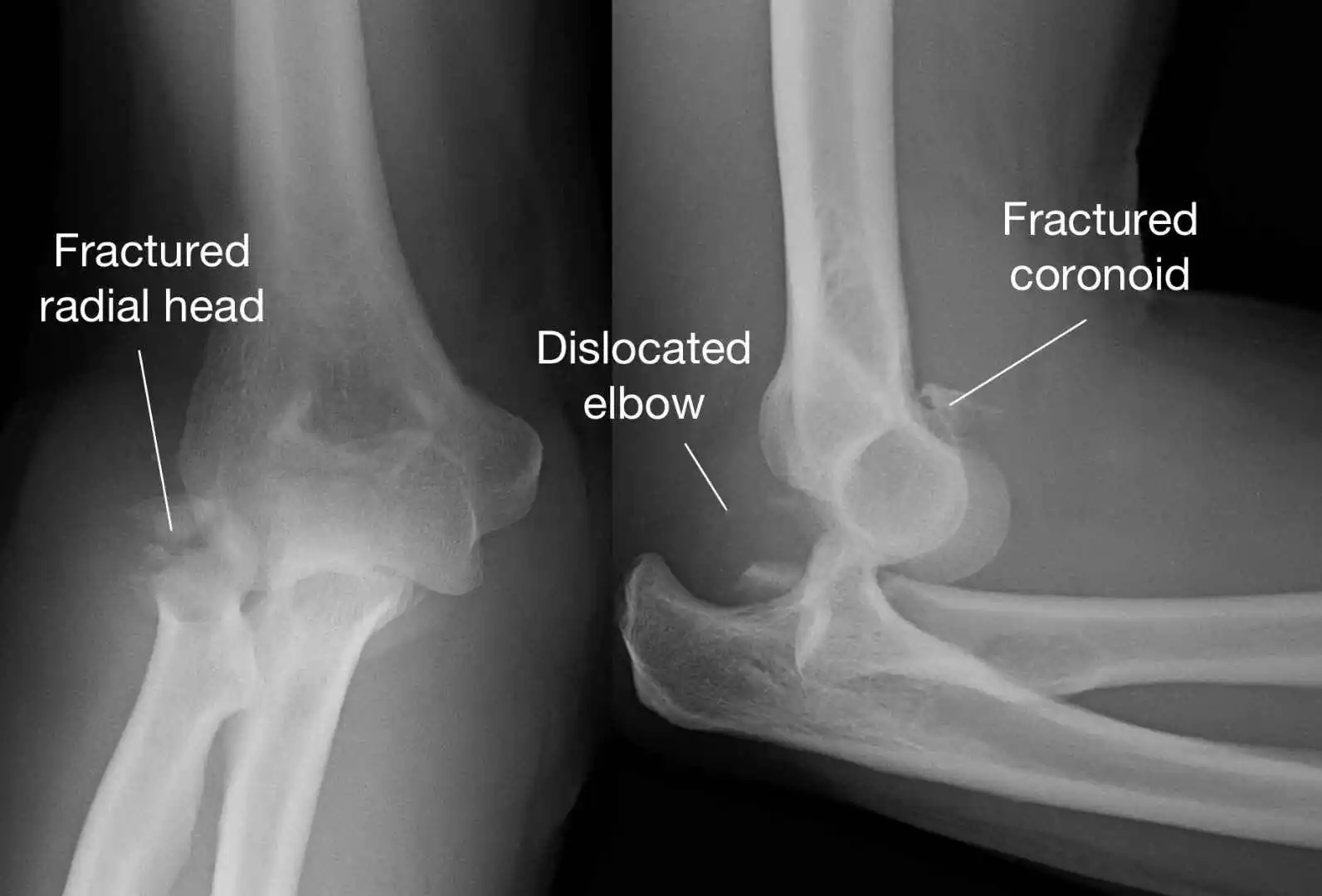

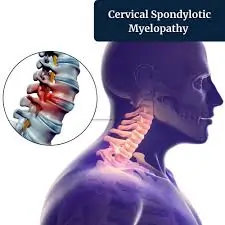
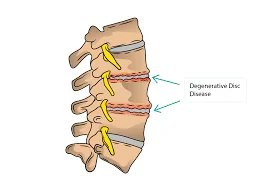
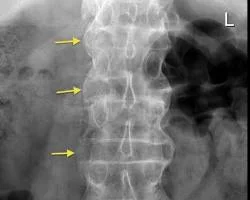
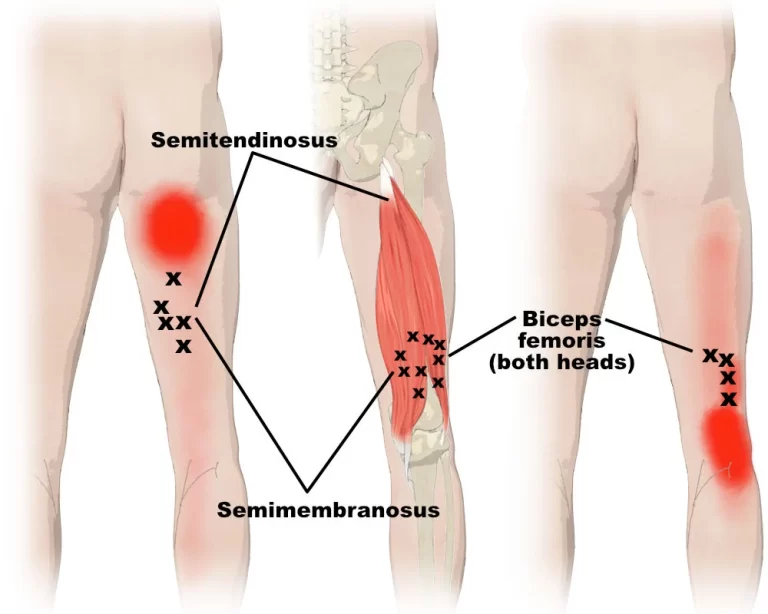
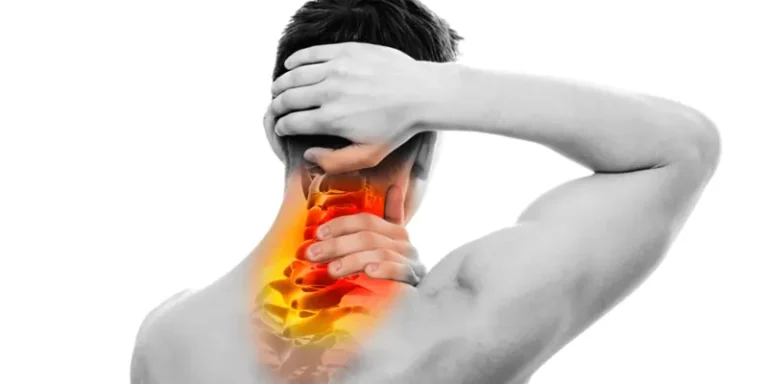
2 Comments